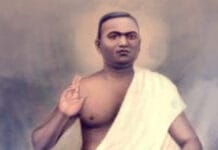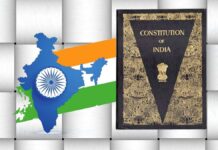The study of linguistics has developed through various schools of thought, each contributing unique insights into the nature and function of language.
Traditional Grammar
Traditional grammar is the earliest form of linguistic study, dating back to ancient Greece and India. Scholars like Aristotle and Panini analysed language through parts of speech, sentence construction, and agreement rules. This school was prescriptive, focusing on what is considered “correct” language rather than how language actually functions in communication. It relied heavily on Latin and Greek models, aiming to maintain linguistic purity.
Period: Classical Antiquity to the 18th century
Key Figures: Aristotle, Panini, Dionysius Thrax
Traditional grammar focused on prescriptive rules of “correct” language use. It described language through parts of speech, sentence structure, and agreement, mainly derived from Latin and Greek models. The aim was not to explain how language functions in the mind but to standardise usage.
Structuralism
The Structuralist school, developed in the early twentieth century by Ferdinand de Saussure, marked a turning point in linguistics. Saussure viewed language as a system of signs, each consisting of a signifier (a sound or written form) and a signified (the concept it represents). He emphasised studying language synchronously (as it exists at a point in time) rather than diachronically (through its history). According to Saussure, meaning arises from the relationships and differences among linguistic elements.
Period: Early 20th century
Founder: Ferdinand de Saussure
Core Ideas:
- Language is a system of signs — each sign has a signifier (sound/image) and signified (concept).
- Emphasis on the structure of language rather than historical evolution.
- Meaning arises through differences within the linguistic system.
- Saussure’s work led to the Concepts of Synchrony (the study of language at a point in time) and Diachrony (the study of language change over time).
Behaviourist School
The Behaviourist school, represented by Leonard Bloomfield and B F Skinner viewed language as a form of learned behaviour based on stimulus and response. This approach avoided speculation about the mind and concentrated on observable linguistic patterns. It laid the foundation for scientific linguistic description but was later criticised for ignoring mental and creative aspects of language.
Period: 1930s–1950s
Key Figures: Leonard Bloomfield, B F Skinner
This approach defines language as behaviour learned through stimulus and response. It avoided mental explanations and focused on observable linguistic patterns. Bloomfield’s Language (1933) provided a systematic description through phonology and morphology.
However, it was criticised for ignoring creativity and mental processes in language.
American Structuralism
American Structuralism, developed by Edward Sapir and Leonard Bloomfield, focused on describing the structure of less-studied and indigenous languages. It introduced methods such as Immediate Constituent Analysis (IC Analysis) and Distributional Analysis, which examined how smaller units combine to form larger grammatical structures. This school valued fieldwork and data-driven linguistic description.
Key Figures: Edward Sapir, Leonard Bloomfield
Developed in the USA, this school described languages through fieldwork and phonemic analysis. It introduced methods such as:
- Immediate Constituent (IC) Analysis – breaking sentences into smaller meaningful units.
- Distributional Analysis – understanding meaning through syntactic position.
Its focus was on describing indigenous and lesser-known languages empirically.
Transformational-Generative Grammar
Introduced by Noam Chomsky in the 1950s, Transformational-Generative (TG) Grammar revolutionised linguistic theory by proposing that language originates from an innate mental capacity. Chomsky argued that all humans are born with a Language Acquisition Device (LAD) that enables them to learn any language. He distinguished between deep structure (the abstract level of meaning) and surface structure (the spoken or written form of language). Transformational rules convert simple kernel sentences into complex ones. TG Grammar also introduced the important distinction between competence (knowledge of language) and performance (actual use of language).
Founder: Noam Chomsky (1957 – Syntactic Structures)
Chomsky shifted focus from structure to the mental processes behind language production.
Core Ideas:
- Humans have an innate Language Acquisition Device (LAD).
- Language has a deep structure (universal grammar) and surface structure (actual speech).
- Transformational rules convert kernel sentences into complex forms.
This school emphasised competence vs performance, i.e., what speakers know vs how they use language.
Functionalism
The Functionalist School, led by M A K Halliday and Roman Jakobson, viewed language as a social semiotic system—a tool for communication rather than a set of formal rules. Halliday’s Systemic Functional Grammar (SFG) identified three key functions of language:
- Ideational – expressing ideas and representing experience,
- Interpersonal – maintaining social relationships, and
- Textual – organising information into coherent messages.
Functionalists believed meaning arises from how language is used in specific social contexts.
Key Figures: M A K Halliday, Roman Jakobson
Functional linguistics views language as a tool for communication rather than an abstract system.
Halliday’s Systemic Functional Grammar (SFG) proposed that meaning depends on context and social purpose.
Pragmatics and Discourse Analysis
Emerging in the mid-twentieth century, Pragmatics and Discourse Analysis shifted focus to language in context. Scholars such as J L Austin, John Searle, and H P Grice examined how speakers use language to perform actions (Speech Act Theory) and how conversation follows shared principles (Cooperative Principle). Discourse Analysis further explored how meaning extends beyond individual sentences to whole texts and interactions, revealing how language shapes and reflects culture and ideology.
Key Figures: J L Austin, John Searle, H P Grice
Pragmatics examines language in use — how meaning is shaped by context, speaker intention, and social norms.
- Speech Act Theory: Language performs actions (promising, apologising).
- Cooperative Principle (Grice): Conversational maxims (quantity, quality, relevance, manner).
- Discourse Analysis: Examines language beyond sentences — in social, cultural, and political contexts.
Cognitive Linguistics
In the 1980s, Cognitive Linguistics arose as a reaction to Chomsky’s formalism. Pioneers like George Lakoff and Ronald Langacker proposed that language reflects human cognition and experience. Meaning is grounded in conceptual structures and embodied experience, rather than being purely abstract. Lakoff and Johnson’s theory of Conceptual Metaphor (e.g., “Time is money”) showed how everyday language is shaped by metaphorical thought.
Key Figures: George Lakoff, Ronald Langacker
Emerging in the 1980s, this school views language as an integral part of human cognition.
- Meaning arises from conceptual structures and embodied experience.
- Rejects Chomsky’s modular mind theory; language is not separate from thought.
- Metaphor Theory (Lakoff and Johnson, 1980): Conceptual metaphors shape understanding, E.g., “Time is money.”
Sociolinguistics
Sociolinguistics, founded by William Labov and Basil Bernstein, studies the relationship between language and society. It analyses how speech varies across regions, social classes, genders, and ethnicities. Sociolinguists explore phenomena such as code-switching, language change, and register variation, emphasising that all dialects are systematic and linguistically valid.
Key Figures: William Labov, Basil Bernstein
Focuses on the relationship between language and society — how speech varies by class, gender, ethnicity, and context.
- Studies code-switching, language change, speech communities, and register.
- Demonstrates that all language varieties (dialects, sociolects) are systematic and rule-governed.
Post-Structural and Critical Linguistics
Post-Structural and Critical Linguistics, influenced by Michel Foucault and Norman Fairclough, view language as a site of power and ideology. Through Critical Discourse Analysis (CDA), they investigate how political, social, and economic power is reproduced through language. This school argues that discourse not only reflects reality but actively constructs social hierarchies, shaping identity, inequality, and authority.
Key Figures: Michel Foucault, Norman Fairclough
This school links language to power, ideology, and social inequality.
- Critical Discourse Analysis (CDA) studies how discourse constructs and maintains power relations.
- Language is not neutral — it shapes thought, ideology, and social hierarchies.
Linguistic Schools
| School | Key Focus | Major Thinkers | Core Concept |
| Traditional | Prescriptive grammar | Aristotle, Panini | Rules and correctness |
| Structuralism | Language as a system | Saussure | Signifier–signified |
| Behaviourism | Observable language | Bloomfield, Skinner | Stimulus–response |
| TG Grammar | Mental structures | Chomsky | Deep vs surface structure |
| Functionalism | Language use in context | Halliday | Metafunctions |
| Pragmatics | Meaning in context | Austin, Grice | Speech acts |
| Cognitive | Language as cognition | Lakoff, Langacker | Conceptual metaphors |
| Sociolinguistics | Social variation | Labov | Dialect and identity |
| Post-Structural | Language and power | Fairclough, Foucault | Ideological discourse |
The evolution of linguistic schools reveals the shift from prescriptive and structural approaches to more dynamic, cognitive, and socio-political perspectives. Each school—whether structural, generative, functional, or critical—has contributed to understanding language as both a mental system and a social practice, highlighting its power to shape human thought, identity, and culture.





























